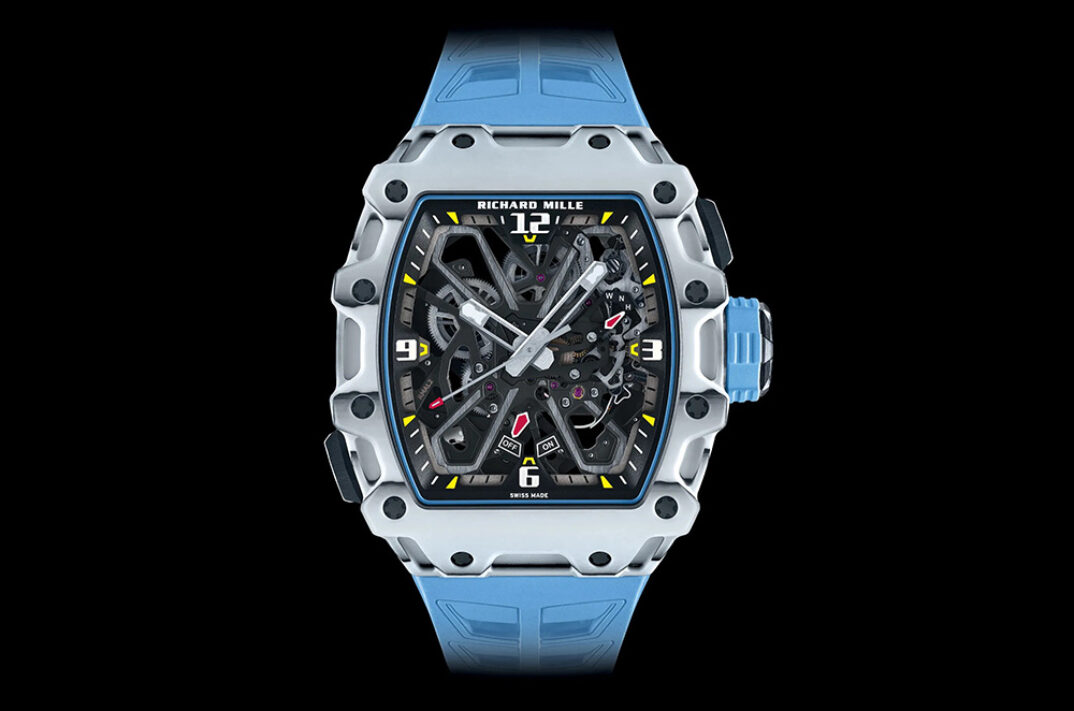
It’s always fascinating to learn about the niche problems of the ultra-rich. With such an abundance of resources and money come unique obstacles that we commonfolk will simply never have to worry about. For Spanish tennis superstar Rafael Nadal, it comes in the form of wearing luxury watches while playing world-class matches. The athlete, a known watch collector and ambassador of Richard Mille, loves to play and practice tennis while wearing mechanical watches; unfortunately, his rapid and erratic arm movements while playing would cause his watches’ delicate movements to malfunction. To address this problem, Richard Mille created a watch that was Nadal-proof: the RM 35-03 Automatic Winding Rafael Nadal.
For those who are unfamiliar with the detailed mechanics of watches, a watch’s rotor powers the watch by transforming its wearer’s inertia into energy. For most people who simply move their arms as they go about their day, they’ll never have to worry about messing up their watch’s rotors. However, if you’re, say, arguably the greatest tennis player ever who has a penchant for wearing six-figure watches as you hit tennis balls with enough force to kill a small elephant, then you may have a problem. To address Nadal’s problems, Richard Mille created the “butterfly rotor,” a patented invention that hands direct control over the automatic movement’s winding to the wearer. This invention allows its wearer to activate a “Sport Mode” by pressing a pusher at 7 o’clock, which moves the rotor’s center of gravity back to the center, bringing the rotor into balance and canceling its winding power, and thus any excessive winding of the caliber.
Richard Mille also employed a free-sprung balance, which guarantees greater reliability when the watch is subjected to shocks and during movement assembly and disassembly. Moreover, to reduce the timepiece’s weight, Richard Mille used grade 5 titanium for the butterfly rotor movement’s weights, bridges, and baseplate, as well as using carbon and quartz TBT to construct the case. Innovation of this magnitude isn’t cheap, especially when you take the exorbitant prices of regular Richard Mille watches, which explains why the watch is expected to retail north of $200,000.
![]()










